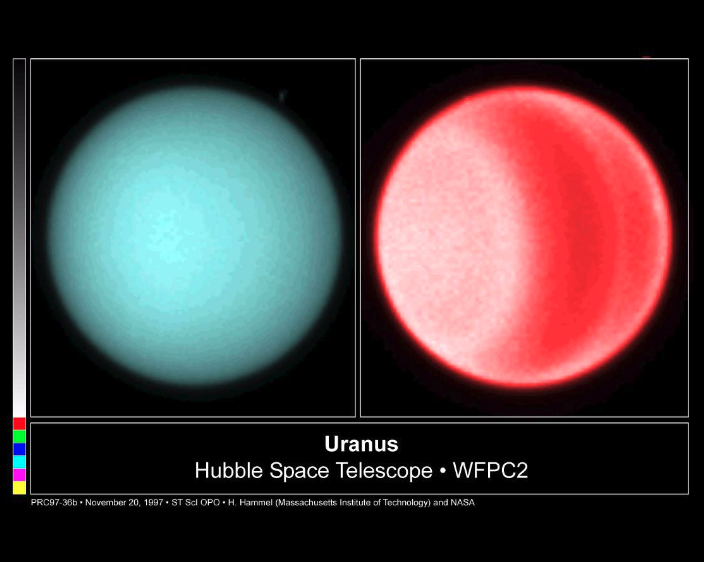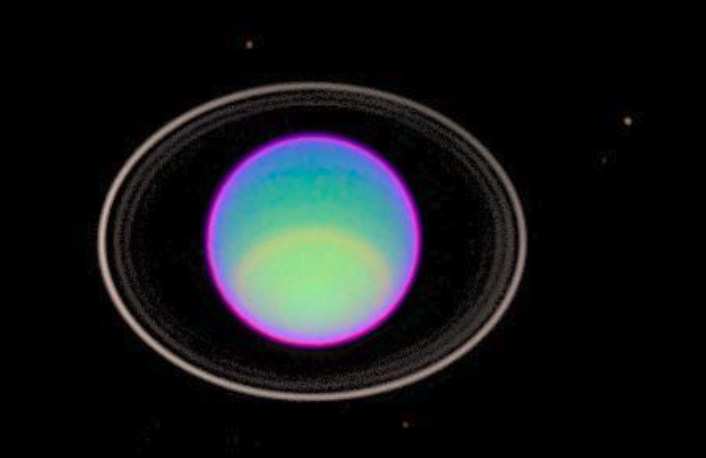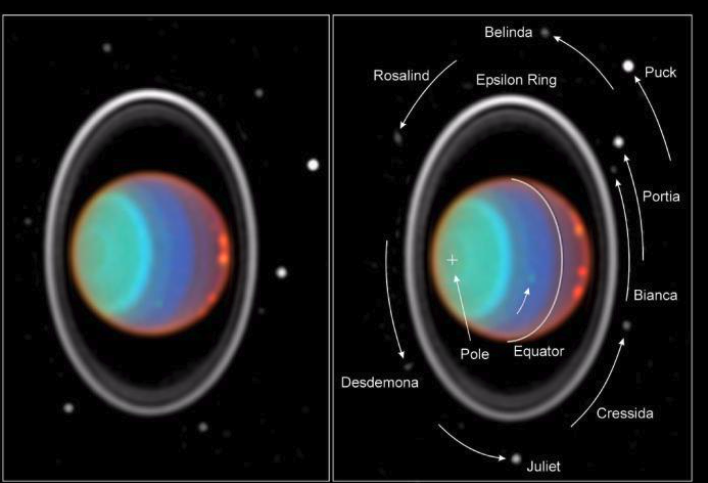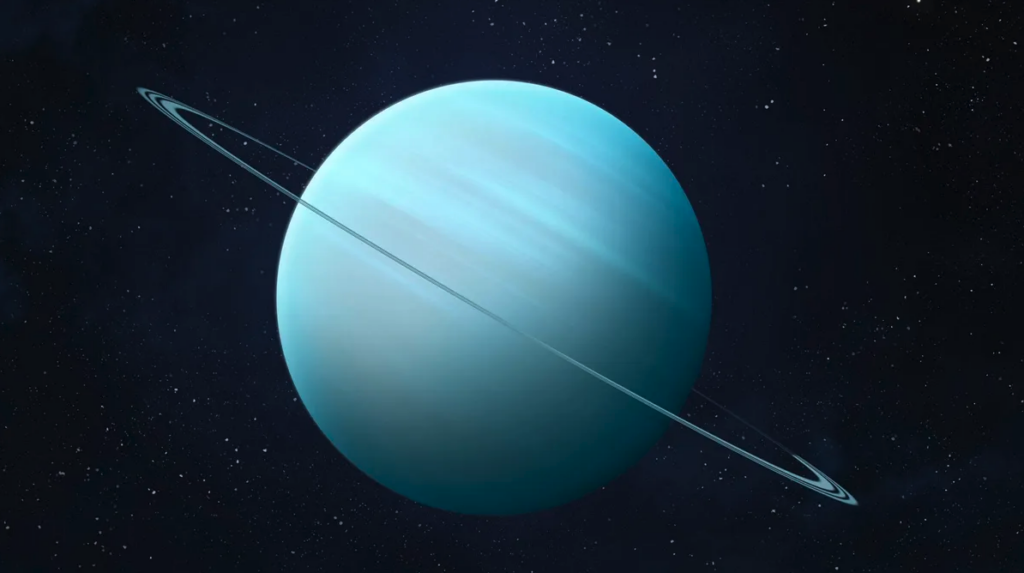Uranus Orbiter and Probe Mission
The Uranus Orbiter and Probe is scheduled to launch in 2031/2032. A gravity assist from Jupiter will slingshot the Orbiter and Probe toward a 2044/2045 Uranus arrival.
The Uranus Orbiter and Probe mission may bog down here on Earth due to budgetary issues or competing NASA missions before the launch date. If the 2031 or 2032 launch date is missed, it will not be possible to obtain a gravity assit from Jupiter.
Lacking a gravity assist, the Uranus Orbiter and Probe will arrive at Uranus in 2053.

Table of Contents
Why Visit Uranus?
Funding competition is fierce between space exploration projects to determine which projects will move forward. Some projects proceed after a preliminary feasibility study.
Planetary Scientists would like to explore both ice giants Uranus and Neptune. Budgets, timelines, and politics come into play.
- Finance
- Spacecraft flight time to Uranus with a gravity assist is roughly a decade.
- Flight time to Neptune is approximately twelve years.
- Time is money. Estimates add $200 million to the baseline project if Neptune is selected instead of Uranus.
- Spacecraft requires a larger rocket to reach Neptune.
- No significant exploration
- There have been zero dedicated missions to Uranus.
- Most of our knowledge of Uranus is from the Voyager 2 mission.
- Voyager 2 flew by Uranus in January 1986 on its way out of the solar system.
- Similarities to other exoplanets
- Astronomers have found over five thousand exoplanets in other star systems that appear very similar to our “ice-giants.”
- Lacking exploration and a baseline understanding of our solar systems’ ice-giant planets makes comparison impossible.
The National Academies of Sciences, Engineering, and Medicine voted in 2022 that NASA’s primary planetary science project for the next decade should be a mission to Uranus. The Uranus project is the number one priority flagship mission, and that’s a big deal.

NASA Mission Classification
NASA has three types of mission classification. The Discovery, New Frontiers, and Solar System Exploration/Flagship missions. The program classification is for small, medium, and large space exploration projects.
Discovery Program
- Addresses vital scientific questions about the solar system
- 450 million dollar budget cap, excluding specific hardware/software/analysis and project partner contributions
- New launch every thirty-six months
- Goddard’s DAVINCI+ will launch in 2029 to explore Venus
New Frontiers Program
- Addresses high-priority goals that the planetary science community has established
- 850 million dollar budget cap, excluding particular hardware/software/analysis and project partner contributions
- New launch every sixty months
- Dragonfly will launch in 2026 to explore Saturn’s moon, Titan
Solar System Exploration Program/Flagship Missions
- High-priority, “large” missions based on the planetary science community input
- Big budget. Previous missions have cost billions of dollars.
- NASA leads the project

Uranus Mission Objectives
The spacecraft arriving at Uranus will have two components. An Orbitor that will collect data as it circles Uranus. The Orbitor will release a Probe into Uranus’ atmosphere.
- Orbitor-Will orbit around Uranus. Data collection from Uranus and its moons.
- Magnetic fields
- Why is the planet so cold?
- Rotation. Uranus has an axis rotation of approximately 98 degrees. (Earth is about 23 degrees.) How/Why did this happen?
- Ring composition. Uranus has 13 rings, but little is known about them. We know that they’re red, blue and grey. What’s the elemental composition? How were the rings formed?
- Moons-
- Do the largest moons have oceans under their icy crusts?
- What is their regolith composition?
- Probe-Will be deployed through the Uranus atmosphere to determine
- Atmosphere composition
- Atmospheric winds source?
- Wind speed as a function of depth
- Thermal stratification
Uranus Orbiter and Probe-Technical development
The National Academies of Sciences, Engineering, and Medicine selected the Uranus mission based on NASA’s preexisting space exploration capabilities and the technology available today. No new technology needs development for inclusion in the Uranus Orbitor and Probe. It’s a “shovel-ready” mission.
Mission planning, spacecraft manufacturing, and concrete mission objects must be defined to begin planning for a specific launch date.

Wrap up!
A project that requires several decades of active engagement, both operationally and financially, will require Herculean efforts to reach fruition. NASA must soon decide if they’re up to the task.
